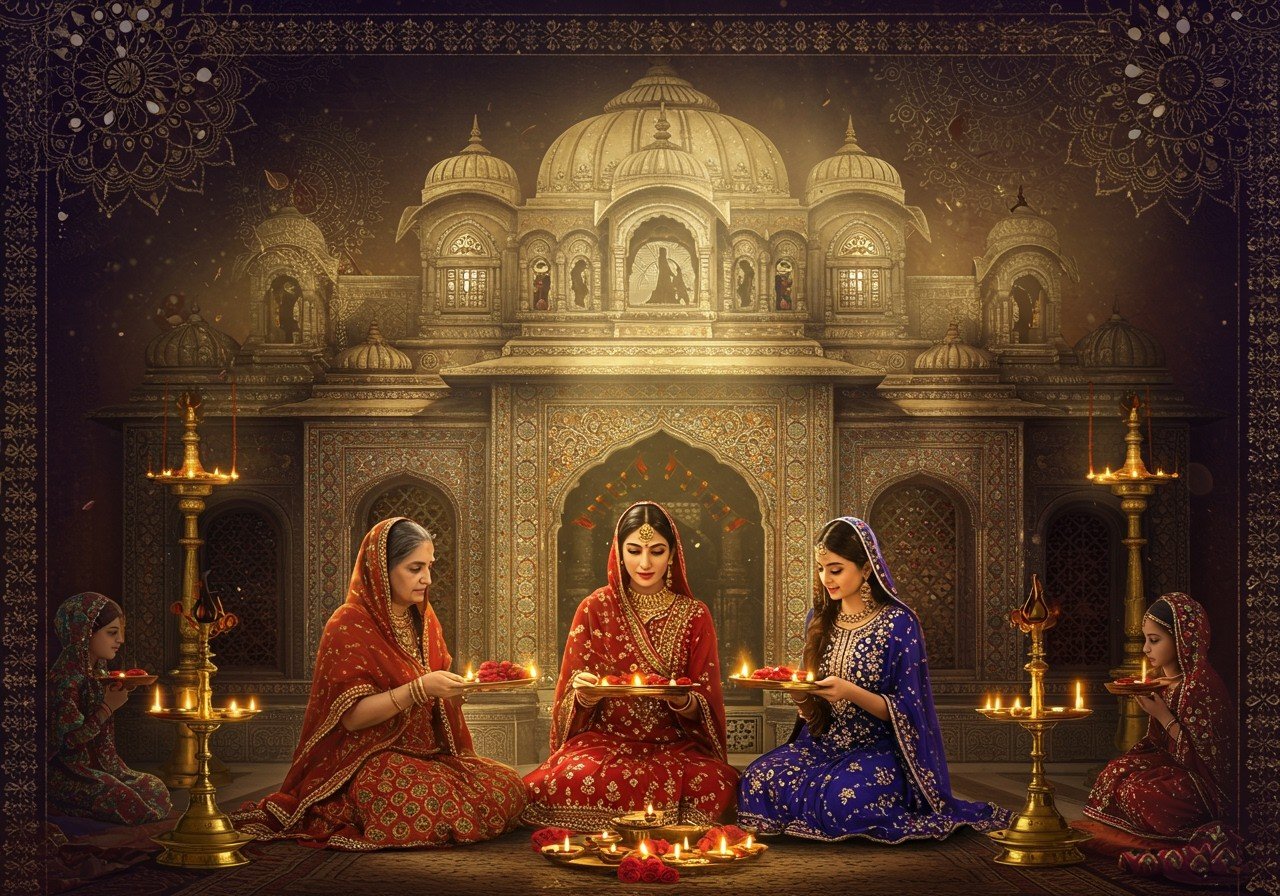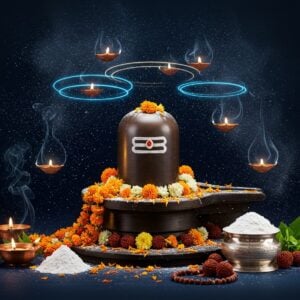
Sindhi Hindu heritage, a vibrant thread in India’s rich cultural tapestry, boasts a history as ancient as the Indus Valley Civilization. From art and philosophy to commerce, Sindhi Hindus have profoundly shaped our world. The 1947 Partition, while a difficult chapter, dispersed Sindhi communities globally, leading to a fascinating evolution of their identity in the face of globalization. This article delves into the heart of Sindhi Hindu traditions and their enduring relevance in our modern world. We’ll explore everything from sacred sites and artistic expressions to the crucial role of language and the warmth of Sindhi hospitality. Let’s embark on this journey of discovery together.
Sacred Spaces: Temples and Pilgrimage
Sindhi Hindu temples stand as testaments to architectural brilliance and spiritual devotion. These sacred spaces, often adorned with intricate carvings and imbued with deep meaning, serve as vital hubs for community and spiritual connection. Consider the awe-inspiring Shri Siddhivinayak Temple, a beacon of faith for countless devotees. Pilgrimage sites, like the revered Hinglaj Mata Temple, hold immense significance, fostering a sense of belonging and shared devotion among Sindhi Hindus worldwide. However, the passage of time, urban development, and environmental shifts pose challenges to the preservation of these cherished landmarks. Thankfully, dedicated restoration initiatives have helped safeguard these cultural treasures for generations to come.
Festivals, particularly Cheti Chand, celebrated with fervor at these sacred sites, breathe life into age-old traditions. In today’s digital age, virtual tours and online platforms are bridging geographical divides, connecting Sindhi Hindus across the globe with their spiritual heritage, ensuring that these traditions continue to flourish.
Art and Music: Expressions of Identity
Sindhi Hindu art, a symphony of colors and intricate designs, speaks volumes about cultural identity. The iconic Ajrak and the delicate Sindhi embroidery are not merely crafts; they are tangible expressions of heritage, each stitch and pattern whispering tales of generations past. Sindhi folk music, deeply rooted in the Sufi poetry of Shah Abdul Latif Bhittai, carries the weight of cultural stories and values, resonating with the soul of the community. Contemporary artists are weaving these traditional motifs into the fabric of modern fashion, while musicians are blending ancient tunes with modern genres, creating a harmonious dialogue between the past and the present.
Ongoing efforts to document and archive these artistic treasures are ensuring their accessibility for future generations. Community festivals and cultural organizations play a pivotal role in promoting Sindhi art and music, both within the local community and on the global stage, ensuring that these vibrant expressions of identity continue to captivate and inspire.
The Sindhi Language: A Cultural Cornerstone
The Sindhi language, with its rich literary history, forms the very foundation of Sindhi Hindu identity. It is the language of ancestors, the vessel of cultural memory, and the key to understanding the nuances of Sindhi traditions. Sadly, factors such as declining usage among younger generations and limited support in regions where it isn’t widely spoken pose a threat to its preservation.
Initiatives like dedicated Sindhi language schools and digital resources such as online dictionaries are stepping up to meet this challenge head-on, empowering new generations to connect with their linguistic heritage. The vibrant tapestry of Sindhi literature, interwoven with oral traditions passed down through generations, plays a crucial role in keeping the language alive, featuring the works of celebrated writers and poets. In an increasingly globalized world, maintaining a balance between linguistic unity and the celebration of cultural uniqueness becomes ever more important. Community-led efforts, including cultural workshops and engaging storytelling sessions for children, are proving to be effective strategies for fostering Sindhi literacy and ensuring its continued vibrancy.
Sindhi Hindu Heritage: A Tapestry of Traditions
Sindhi Hindu heritage is a vibrant mosaic of history, arts, music, and literature. With roots tracing back to the Indus Valley, this rich culture has blossomed under the influence of Aryan and Arabic/Persian traditions, evolving into a unique blend known for its colorful customs and peaceful identity. Let’s explore some key aspects of this captivating heritage:
- Cultural Identity and Traditions: Sindhi culture is celebrated for its harmonious integration of ancient influences. Traditional clothing plays a pivotal role in expressing this identity. Men traditionally wear the Kurta and Pajama, often complemented by the distinctive Sindhi Topi (cap) and the intricately patterned Ajrak shawl. Women grace themselves with exquisitely embroidered garments, often crafted from the vibrant Ajrak fabric, especially during weddings and festive occasions. These garments are not mere attire; they are symbols of cultural pride, often exchanged as cherished gifts, weaving threads of connection between generations.
- Language as a Cultural Pillar: The Sindhi language, a linguistic treasure from the Indus Valley, stands as a cornerstone of cultural identity. Its preservation is crucial for maintaining the continuity of cultural memory and heritage. Challenges such as declining usage among younger generations highlight the importance of initiatives like Sindhi language schools and the development of digital resources like online dictionaries to help revitalize and sustain this precious linguistic heritage. Literature and the rich tradition of oral storytelling play a vital role in keeping the language alive and vibrant, echoing the voices of ancestors and transmitting their wisdom to future generations.
- Celebrations and Festivals: Festivals, such as Cheti Chand (Sindhi New Year) and Sindhi Cultural Day (Ekta Day), illuminate the vibrant spirit of the Sindhi community. These occasions are a kaleidoscope of color and tradition, as people don their traditional attire and participate in lively rallies, often adorned with the distinctive Ajrak patterns. Music, dance, and communal feasts become expressions of shared identity, strengthening cultural bonds and ensuring the continuity of ancestral customs.
- Arts and Music: A Cultural Narrative: Sindhi art, encompassing pottery, embroidery, and weaving, holds immense cultural and economic significance. The intricate patterns of Ajrak, a symbol of Sindhi heritage, have found admirers worldwide. Sindhi folk music, drawing inspiration from the soulful Sufi poetry of Shah Abdul Latif Bhittai, keeps cultural stories and values alive, resonating with the heart of the community. Contemporary artists, inspired by these traditions, are seamlessly integrating traditional motifs into modern fashion, ensuring the continued relevance of cultural heritage in the 21st century.
- Culinary Delights: Sindhi cuisine is a celebration of flavors, known for its rich, spicy character. Dishes like the fiery spicy fish curry served with fluffy rice, the aromatic Sindhi Biryani, and the flavorful Seyal Mani tantalize the taste buds and offer a glimpse into the heart of Sindhi culinary traditions. Sweet treats like Falooda and Thadal add a touch of sweetness to celebrations and everyday life. The act of sharing food is a cherished tradition in Sindhi culture, reflecting the community’s deep-rooted value of hospitality.
- Hospitality: A Hallmark of Sindhi Culture: Sindhi people are renowned for their warmth and generous hospitality. Guests are treated with the utmost honor and respect, reflecting the community’s deeply ingrained values of kindness and graciousness. This tradition of welcoming others with open arms strengthens community bonds and fosters a sense of belonging.
- Global Reach and Preservation Efforts: The 1947 Partition, while a challenging period, led to the dispersal of Sindhi communities worldwide, contributing to the evolution of their modern identity. Despite the challenges posed by urbanization and globalization, dedicated community efforts are focused on preserving and celebrating their rich cultural heritage. Digital platforms are playing an increasingly important role in connecting Sindhis globally, offering innovative avenues like virtual tours of sacred sites, such as the revered Hinglaj Mata Temple, making heritage accessible to all, regardless of location. You can discover authentic puja items and religious materials on Poojn.in, helping you connect with your traditions and perform rituals in the comfort of your home. We offer everything from pure cotton wicks for traditional Sindhi aarti and brass items for ceremonies to authentic kumkum, roli, and puja thalis with Sindhi motifs. Need specific items for Saraswati puja? We’ve got you covered with white flower offerings, pure cotton wicks, brass oil lamps, special puja thalis, and incense sticks and holders. Visit our website, call us, or WhatsApp us to place your order.
Embracing Sindhi Hindu Heritage in 2025 and Beyond
Sindhi Hindu heritage isn’t merely a relic of the past; it is a vibrant, living tradition, woven into the fabric of everyday life – in every celebration, every garment, every shared meal. Embracing this heritage means cherishing the unique blend of customs and values passed down through generations. As we step into 2025 and beyond, let’s continue to honor and preserve this rich cultural tapestry.
By actively participating in community events, learning the Sindhi language, and supporting local artists, we contribute to the continuity of our heritage. Sharing stories and traditions with family and friends strengthens the bonds that connect us to our roots. Digital platforms offer exciting new ways to connect with our heritage and celebrate it globally. Together, we can ensure that Sindhi Hindu culture remains a vital and cherished part of our lives, reflecting the enduring spirit of a community that values its past while embracing the future.
FAQs on Sindhi Hindu Heritage
What are some important Sindhi Hindu temples and pilgrimage sites? Significant Sindhi Hindu temples, such as the Jhulelal Temple and the Sadhu Bela Temple, attract numerous devotees throughout the year. Pilgrimage sites like the Hinglaj Mata Temple in Balochistan hold deep spiritual significance for the community. The Ashtabhuji Temple is another revered place of worship. You can find authentic puja items for these temples on Poojn.in.
How can art and music help preserve Sindhi Hindu heritage? Art and music play a vital role in keeping traditions alive. Sindhi folk music and classical dance narrate stories from the past, while artists create paintings and sculptures that reflect cultural values. These artistic expressions serve as powerful mediums for transmitting heritage to younger generations. You can explore traditional Sindhi instruments and music accessories on Poojn.in.
Why is the Sindhi language important for preserving Sindhi Hindu identity? The Sindhi language is a repository of stories, songs, and sacred scriptures. It is a vital link to our ancestors, enabling us to understand cultural practices and connect with our roots. Teaching the language to children is essential for ensuring the survival of Sindhi Hindu identity.
What role do festivals play in Sindhi Hindu culture? Festivals like Cheti Chand, which celebrates the birth of Uderolal, the community’s revered saint, bring people together, strengthening cultural bonds and keeping traditions vibrant. These celebrations are crucial for heritage preservation.
How can one participate in preserving Sindhi Hindu heritage? There are many ways to contribute to the preservation of Sindhi Hindu heritage, from participating in community events and learning the Sindhi language to supporting local artists. Sharing stories and traditions with friends and family also plays a significant role in keeping our heritage alive. You can purchase traditional clothing and accessories like the Sindhi Topi and Ajrak from Poojn.in. Our platform also offers a range of havan samagri and other puja essentials.
Are there online resources for learning about Sindhi Hindu heritage? Yes, numerous websites and online courses offer valuable information on Sindhi culture, language, and history. Virtual tours of temples and art exhibitions provide opportunities to explore our heritage from the comfort of your home.
What is the significance of Sindhi Hindu rituals and customs? Rituals, such as the Sindhi wedding ceremony, are imbued with deep cultural meaning. They reflect core values like family unity and respect for elders, and practicing these customs ensures that our culture remains alive and relevant. You can find all the necessary items for performing these rituals on Poojn.in, including pooja ghats and other essential items.
How can younger generations be encouraged to value Sindhi Hindu heritage? Engaging younger generations in cultural activities, teaching them the Sindhi language, and sharing ancestral stories can spark their interest and foster a deeper appreciation for their heritage. Encouraging participation in festivals and community events helps build a strong connection to their roots. Explore educational resources and engaging activities for children on Poojn.in.


